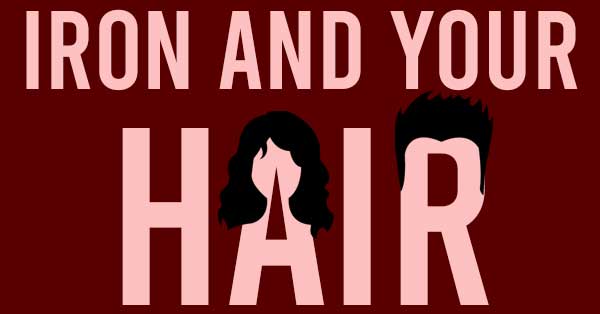The Link Between Iron Deficiency and Hair Loss: Understanding the Connection
Experiencing unexplained hair loss? It’s a common concern, and while there are many potential causes, one often overlooked factor is iron deficiency. At hairy.cartlab.web.id, we understand the importance of healthy hair and the various factors that contribute to its growth and vitality. This comprehensive guide delves into the complex relationship between iron deficiency and hair loss, providing you with a clearer understanding of this connection and potential solutions. Hair loss can be distressing, but understanding the underlying cause is the first step towards effective treatment. Let’s explore how iron plays a crucial role in hair health and what you can do if you suspect an iron deficiency is contributing to your hair loss.
Iron is an essential mineral for numerous bodily functions, and its deficiency can manifest in various ways, including hair loss. This isn’t simply a matter of aesthetics; it’s a sign that your body isn’t functioning optimally. A lack of iron can significantly impact the health of your hair follicles, leading to thinning hair, shedding, and even more serious conditions. Therefore, understanding the mechanics of this relationship is vital for addressing the problem effectively.
This article will explore the science behind this connection, examining the role iron plays in hair growth, the symptoms of iron deficiency, diagnostic methods, and effective treatment options. We will also discuss lifestyle changes and dietary adjustments that can help improve iron levels and promote healthier hair growth. By the end of this article, you’ll have a clearer picture of how to address potential iron deficiency-related hair loss and take proactive steps to improve your overall hair health.

Understanding the Role of Iron in Hair Growth

Iron is a crucial component in the production of hemoglobin, a protein in red blood cells responsible for carrying oxygen throughout the body. This oxygen is vital for hair follicle function. Hair follicles are highly metabolically active structures, requiring a constant supply of oxygen and nutrients to produce healthy hair. When iron levels are low, the body’s ability to deliver oxygen to the hair follicles is compromised, leading to impaired hair growth. This oxygen deprivation can slow down or even halt the hair growth cycle, resulting in noticeable hair thinning and shedding. Furthermore, iron plays a role in the synthesis of keratin, the main structural protein of hair. Insufficient iron can lead to weaker, more brittle hair, making it more prone to breakage.
The process is intricately linked to the different stages of the hair growth cycle (anagen, catagen, telogen, and exogen). Iron deficiency can significantly impact the anagen phase (growth phase), shortening it and leading to premature entry into the telogen phase (resting phase), resulting in increased hair shedding. This disruption to the normal hair cycle is a key mechanism behind iron deficiency-related hair loss. This is why addressing iron deficiency is crucial not only for overall health but also for restoring healthy hair growth. If you’re concerned about your hair health, remember that understanding the underlying causes is key. For inspiration on styles that complement healthy hair, check out our article on “10 Hair Colors That Match the Hottest Hairstyles” at hairy.cartlab.web.id/10-hair-colors-that-match-the-hottest-hairstyles.
Symptoms of Iron Deficiency Anemia and Hair Loss

Iron deficiency anemia, the most severe form of iron deficiency, is characterized by a low level of hemoglobin in the blood. While hair loss is a common symptom, it’s often accompanied by other noticeable signs. These can include:
- Fatigue and Weakness: Feeling constantly tired and lacking energy is a hallmark of iron deficiency.
- Shortness of Breath: The reduced oxygen-carrying capacity of the blood can lead to difficulty breathing, even during mild exertion.
- Pale Skin: A pale complexion, particularly noticeable in the gums and inner eyelids, is a classic indicator.
- Headaches and Dizziness: The lack of oxygen to the brain can cause headaches and dizziness.
- Cold Hands and Feet: Poor circulation due to reduced blood oxygenation can result in cold extremities.
- Brittle Nails: Nails may become brittle, thin, and prone to breakage.
- Restless Legs Syndrome (RLS): An irresistible urge to move the legs, often accompanied by uncomfortable sensations.
- Pica: A craving for non-nutritive substances like ice, clay, or dirt.
It’s important to note that hair loss associated with iron deficiency is often diffuse, meaning it’s spread across the scalp rather than localized in specific patches. The hair may appear thinner and less lustrous, and increased shedding is a common complaint. If you’re experiencing several of these symptoms, it’s crucial to consult a doctor for proper diagnosis and treatment.
Diagnosing Iron Deficiency and Hair Loss

Diagnosing iron deficiency involves several steps, primarily focusing on blood tests. Your doctor will likely order a complete blood count (CBC) to measure your hemoglobin levels and hematocrit (the percentage of red blood cells in your blood). Low hemoglobin and hematocrit levels are indicative of anemia. Further tests may include:
- Serum Ferritin: This test measures the amount of ferritin, a protein that stores iron in the body. Low ferritin levels indicate low iron stores.
- Serum Iron: This test measures the amount of iron circulating in the blood.
- Total Iron-Binding Capacity (TIBC): This test measures the blood’s ability to bind iron.
- Transferrin Saturation: This test indicates the percentage of transferrin (an iron-transporting protein) that is saturated with iron.
These tests, in combination with a thorough medical history and physical examination, will help your doctor determine if iron deficiency is the cause of your hair loss. Early diagnosis is crucial for effective treatment and preventing further complications. Remember, while these tests are essential, they should be interpreted by a medical professional.
Treatment Options for Iron Deficiency and Hair Loss

Treatment for iron deficiency-related hair loss focuses on restoring iron levels to normal. This typically involves:
- Iron Supplementation: Oral iron supplements are the most common treatment. Your doctor will prescribe the appropriate dosage and type of iron supplement based on your individual needs. It’s essential to follow your doctor’s instructions carefully and take the supplements as directed. Common side effects can include constipation and upset stomach, but these usually subside with time.
- Dietary Changes: Incorporating iron-rich foods into your diet is crucial. Good sources of iron include red meat, spinach, lentils, beans, and fortified cereals. Vitamin C enhances iron absorption, so consuming iron-rich foods with a source of Vitamin C can be beneficial. For more information on optimizing your vitamin intake for hair health, see our article on “The Best Vitamins for Strong, Healthy Hair” at hairy.cartlab.web.id/the-best-vitamins-for-strong-healthy-hair.
- Intravenous Iron Therapy: In cases of severe iron deficiency or poor absorption of oral iron, intravenous iron therapy may be necessary. This involves administering iron directly into your bloodstream.
The effectiveness of treatment is monitored through regular blood tests to track iron levels and ensure they are returning to normal. Hair regrowth typically begins once iron levels are adequately restored, although it may take several months to see significant improvement. Patience and consistency are key.
Lifestyle Changes and Preventative Measures

Beyond medical intervention, lifestyle changes can play a significant role in preventing and managing iron deficiency and promoting hair health:
- Balanced Diet: Focus on a diet rich in iron, along with other essential nutrients like protein, vitamins, and minerals. This provides your body with the building blocks it needs for healthy hair growth.
- Stress Management: Chronic stress can negatively impact overall health, including hair growth. Practicing stress-reducing techniques like yoga, meditation, or spending time in nature can be beneficial.
- Sufficient Sleep: Adequate sleep is crucial for cell regeneration and overall bodily function. Aim for 7-8 hours of quality sleep each night.
- Regular Exercise: Regular physical activity improves blood circulation, which is essential for delivering oxygen and nutrients to the hair follicles.
- Hydration: Drinking plenty of water keeps your body hydrated and supports overall health, including hair health.
While this article focuses on the link between iron deficiency and hair loss, it’s important to remember that hair loss can have many causes. Consulting a dermatologist or healthcare professional is essential for a proper diagnosis and personalized treatment plan. Don’t let hair loss overshadow your well-being; take proactive steps to address the underlying cause and enjoy healthy, vibrant hair. For a completely different perspective, perhaps you’d like to explore our article on “Porch and Patio Design: A Complete Guide” at hairy.cartlab.web.id/porch-and-patio-design-a-complete-guide. It’s a reminder that even amidst concerns about your health, there are many other aspects of life to enjoy.
Conclusion:
The link between iron deficiency and hair loss is undeniable. Understanding this connection is crucial for addressing hair loss effectively. Through proper diagnosis, treatment, and lifestyle adjustments, you can significantly improve your iron levels and promote healthier, stronger hair. Remember to consult with your doctor or a healthcare professional for personalized advice and treatment. Learn more about managing and understanding this connection at The Link Between Iron Deficiency and Hair Loss: Understanding the Connection.









Comments